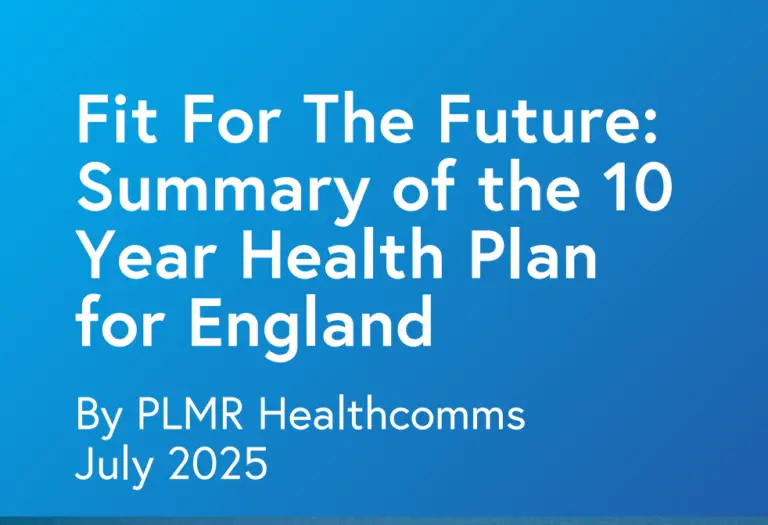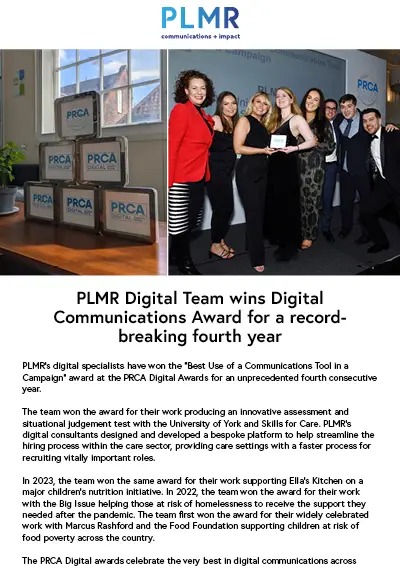Health and care providers across England are catching their breath after what has been a whirlwind three years, during which time it has undeniably transformed their operations.
From soaring energy costs to the financial impact and legacy of the Covid-19 pandemic on their operations, staff and wider communities, care providers have been forced to adapt to events that have simply been beyond their control.
This year, yet more change is coming as the Care Quality Commission (CQC) introduces a new regulatory approach. Whilst it remains to be seen how these changes will play out in the grades of providers, and their reputations in their community, in this piece we explore what is changing, focusing on four key areas:
- CQC Evidence Gathering
- Frequency of CQC Assessments
- Reaching a CQC Rating
- Next Steps for Providers
Evidence Gathering
The CQC’s in-person inspections have long been the bedrock of a provider’s ratings. Through observing a provider’s care environment, culture, ways of working, and by talking to people working in and receiving care about their experiences, the CQC has determined a provider’s overall rating.
The new framework will see the CQC change its approach. Inspections will still be part and parcel of the process but will no longer be the CQC’s primary way of collecting evidence.
Under the new framework, the CQC will collect items under six ‘evidence categories’, these are as follows:
- People’s experience of health and care services
- Feedback from staff and leaders
- Feedback from partners
- Observation
- Processes
- Outcomes
Inspectors will be gathering the evidence both in-person and off-site. Their new way of working will see them work with external organisations, such as local Healthwatch Groups and the regulator’s ‘Experts by Experience’ (the CQC’s in-house specialist advisers and executive reviewers).
Frequency of assessments
Gone too are the days of a service’s CQC rating determining when the inspectors will next pay it a visit. The CQC will now deploy an ‘evidence first’ approach, which will see inspectors trigger an assessment based on the evidence and information it receives at any time from a variety of sources.
Where it sees concerns, this will prompt an inspection. This approach to assessment could be argued to be one of the new framework’s most defining goals, and one which is likely to have the most significant impact on providers. How their rating is reached is certainly more intricate.
Reaching a Rating
The key overall metric of a provider’s success will remain the CQC’s four ratings, providing a descending scale ranging from ‘outstanding’, ‘good’, ‘requires improvement’, and ‘inadequate’.
The same five key questions the CQC asks of all providers will also remain – Is a Service Well-led, Caring, Responsive, Safe and Effective?
What is changing is the CQC’s existing key lines of enquiry and prompts. Coming in their place are what it calls ‘quality statements’ which sit underneath each of the five key questions.
A quality statement is supported by ‘evidence types’ which sits within the six ‘evidence categories’ set out earlier.
A scoring framework is used against each ‘evidence category’, this ranges as follows:
4 = Evidence shows an exceptional standard of care
3 = Evidence shows a good standard of care
2 = Evidence shows shortfalls in the standard of care
1 = Evidence shows significant shortfalls in the standard of care
The process of determining an overall rating using this new scoring process is as follows:
- CQC inspectors review all evidence types provided within ‘evidence categories’ to support each ‘quality statement’.
- Inspectors make a judgement on evidence types to apply a score to each of the six ‘evidence categories’.
- Evidence category scores are combined to give a score for the related ‘quality statements’ which sit in the five key questions the CQC asks in its inspection reports.
- The quality statement scores will give a total score for the relevant key question the CQC asks. This score generates a rating for each key question.
- They key question ratings are aggregated to give a provider’s overall rating.
The CQC says it will continue to publish a providers’ rating as it has always done, but that it will also intend to publish the individual quality statement scores in the future.
Its new framework will see it move away from assessing a provider at one point in time, and instead look to assess providers on an ongoing basis. This means the scores for those evidence categories,
and by extension the quality statements and key question ratings, can be updated at different times and can then potentially impact a provider’s rating on a more fluid and ongoing basis.
The CQC’s hope is that the scoring will mean it makes more consistent overall rating judgements with a numeric metric.
Next Steps The CQC is continuing to encourage providers to sign up to its new provider portal, which is an integral part of its new regulatory approach. This summer will see the new provider portal rolled out, with providers being notified individually as to when they’re able to sign up.
In an update the regulator shared this month, it set out that, “new operational teams will begin to reach out to providers”, and it was keen to stress, “there won’t be large-scale changes to existing relationships.”
Later this year, its new assessment approach will be gradually implemented.
What is clear is that providers will undoubtedly need time to familiarise themselves with what is a new way of working, including how a heavy focus on data will underpin a new, more complex scoring system.




